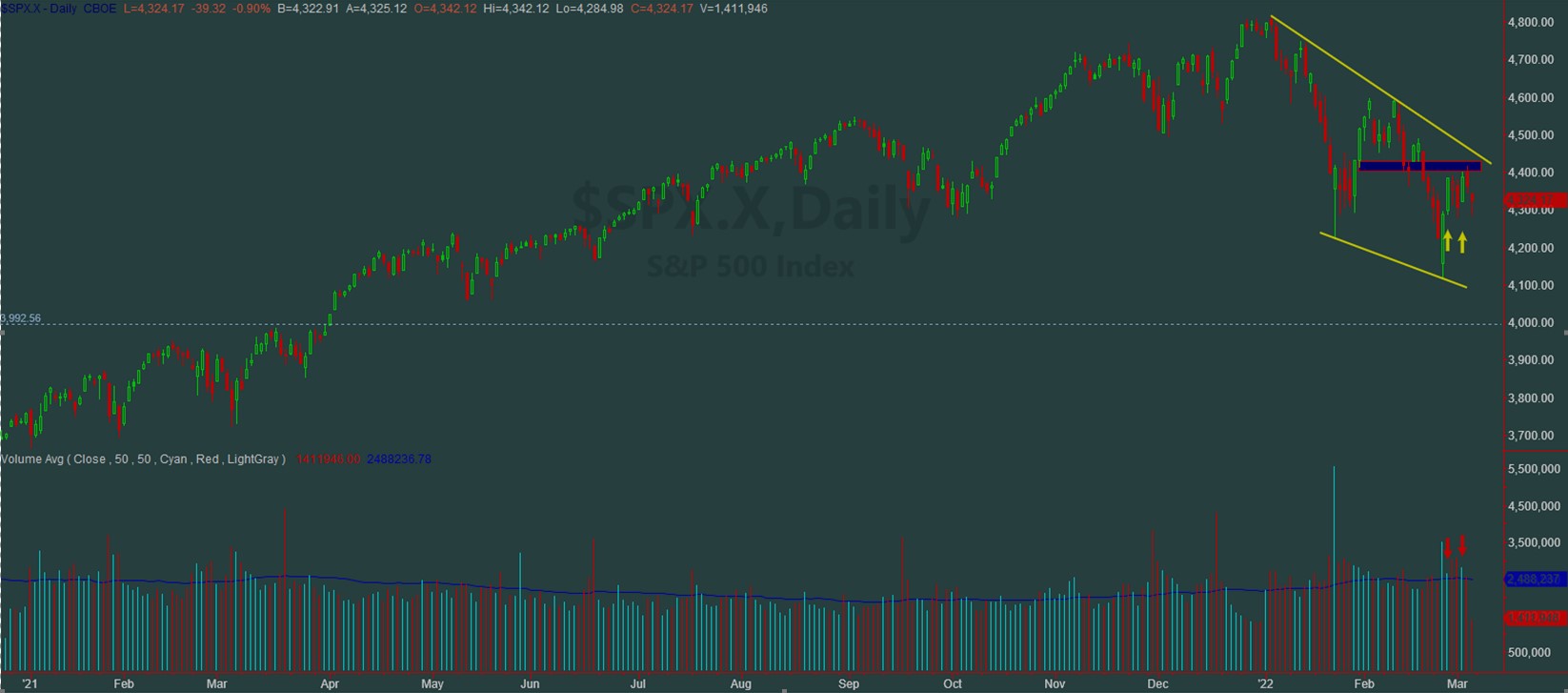Defensive sector leadership, lower volume than the previous day, and no change in volatility readings are some of the variables present in bear market rallies. Sector leadership in Wednesday’s rally was not bad, but S&P 500 volume was lower than the day prior and volatility remained above 30, which is still elevated.
It is starting to look like Phase 4 in the economic cycle, where GDP and inflation decelerate at the same time. The problem is that the rate of change of inflation, driven by energy and food prices, is not slowing down as originally thought. In the meantime, the USD is strengthening and the 10 year US Treasury yield broke down on Monday and Tuesday. Perhaps the bond market is anticipating slowing GDP growth, as the flattening of the yield curve continues.
Most commodity prices are up Year to Date (YTD). Oil is up close to +42% YTD to $110/barrel. Natural gas is up 33% YTD after being up 53% in early February. The Main Trend of both commodities is bullish and bad for inflation and people’s wallets. Real disposable income fell by almost -10% Yr/Yr. This should have a negative effect on consumption, which in turn should affect GDP growth. Keep in mind that consumer spending is about 70% of U.S. GDP. If inflation continues to accelerate, it will hurt consumer spending. Consequently, GDP should continue to decelerate as we approach Q2 2022. Unfortunately, Europe seems to be in a similar situation. Although at the beginning of the year it appeared to be a valid alternative to U.S. equity markets, Europe is no longer an option.
Volatility (Vix) is up 75% YTD and its Main Trend is now bullish. Volatility and the stock market move in opposite directions. The problem is that if volatility moves up, the stock market should move down.
Small cap companies, a reflection of the U.S. domestic economy, are down -19% since 11/06/21.
The financial sector (XLF) is under pressure, too. This is important because banks make more money when interest rates move up and the yield curve steepens. The opposite is taking place now—the yield curve is flattening and the spread between short term and long term U.S. TSY rates is narrowing most likely in anticipation of slower economic growth. Keep in mind that financial markets are not backward looking mechanisms. They are always forward-looking pricing mechanisms, anticipating possible developments in the real economy. In other words, financial markets are not a reflection of current economic activity, but a foreshadowing of future economic activity.
What does the anatomy of a bear market look like? The Main Trends of gold, US Dollar, energy, commodities, volatility and the price of U.S. Treasury bonds should all be bullish. The only missing component in this group is the U.S. Treasury, which has not yet triggered a bullish signal in our quantitative process. Therefore, our portfolios continue to reflect a very defensive stance, initiated in mid to late January 2022. We still believe this is a cyclical (short term) bear market.
What about the conflict between Russia and the Ukraine? As unfortunate as it is, the conflict is only exacerbating what was already in the works in the market. Sir Winston Churchill, you are missed!
The chart below shows the downtrend of the S&P 500 Index failing at resistance (blue shaded area). The yellow arrows show the latest rally attempts on lower volume (red arrows).
Chart provided by TradeStation
(*) The Greenwich Creek Capital “Index Trend Table” is not meant to be used in isolation, it is part of a more complex set of variables and it is not designed to provide trade entry and exit points.
Do you have a risk management strategy and a proven repetitive investment process to profit in bull markets and protect capital in bear markets? Check our website for more information about how we manage investment portfolios:
www.GreenwichCreekCapital.com
For High Net Worth Portfolios
And
www.FreedomInvest.com
The Active Asset Management Platform for Small Accounts.






